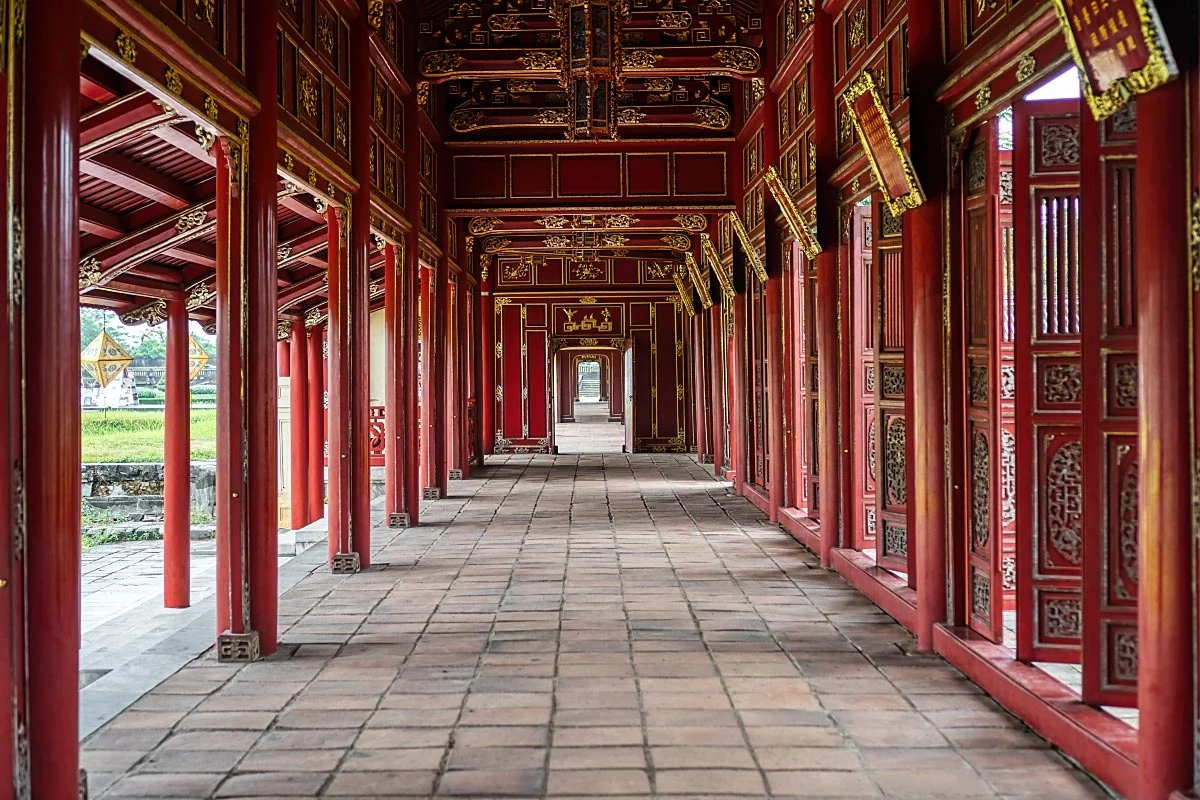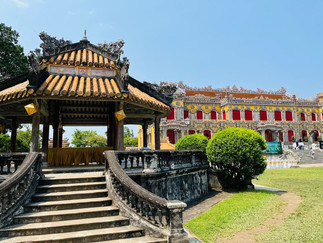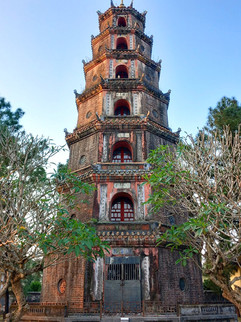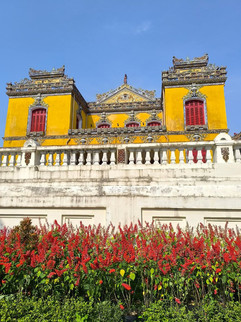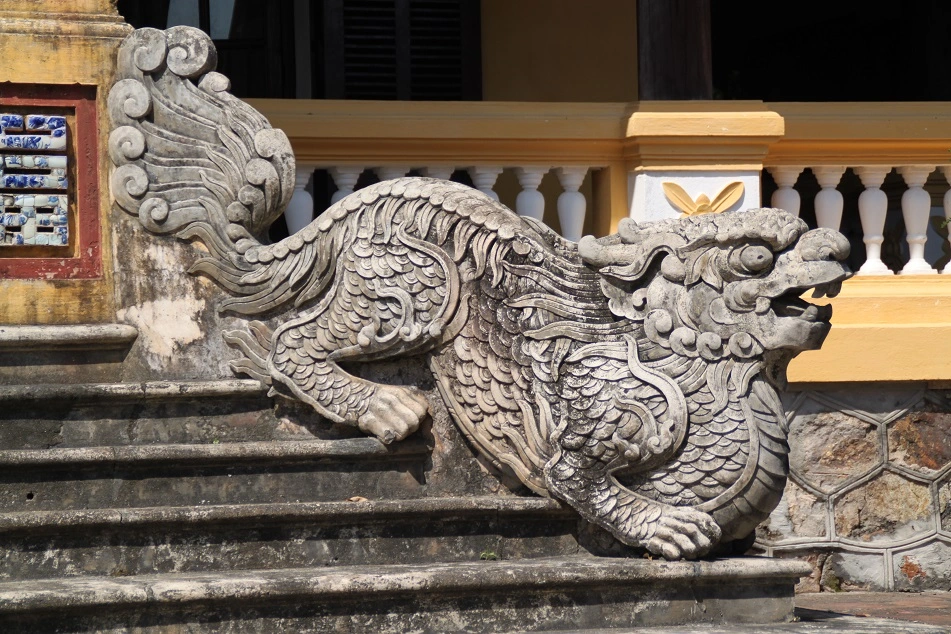Huế’s Last Empire - The Rise and Ruin of the Imperial Citadel
- shan157
- May 21
- 4 min read
In 1777, the Nguyen clan was extinguished in a brutal massacre that marked the end of their reign, save for one, a fifteen-year-old boy named Nguyen Phuc Anh. Orphaned and on the run, he hid in the southern reaches of Vietnam, surviving betrayal, jungle sickness and assassins sent by the rival Tay Son brothers. Legend tells of a mysterious hermit who gave the boy refuge in the sacred mountains of Thien Thai, prophesying that the boy would reclaim his bloodline and raise an empire from the ashes. For more than two decades, Nguyen Phuc schemed and battled, forging alliances with French mercenaries and loyal mandarins. In 1802, after years of civil war drenched the country in blood, his armies marched victorious into Thang Long. Nguyen Phuc declared himself Emperor Gia Long, founder of the Nguyen Dynasty.

The Nguyen Dynasty was born in fire and superstition. Gia Long immediately sought to bind his rule to divine forces by constructing a massive Imperial City in Hue, the spiritual heart of his ancestors. The city’s location wasn’t chosen by chance, masters of geomancy, deeply versed in ancient Chinese and Vietnamese spiritual sciences, scoured the land for omens. Hue, cradled between the azure Perfume River and the protective Ngu Binh mountain, was believed to be a convergence point of powerful energies. The city's builders believed two islands near the river’s bend resembled a dragon and a tiger, celestial guardians meant to shield the emperor from misfortune. Every angle, path and doorway in the city was laid in accordance with cosmic balance.

The Citadel of Hue, known as the Dai Noi, rose from the floodplains like a fortress of legend. A vast, square stronghold surrounded by a 10 kilometre moat and walls thick enough to swallow cannon fire, it housed more than just stone and royalty. Within its 6 metre high bastions lived an entire ecosystem of courtiers, warriors, scholars and eunuchs. At its heart lay the Purple Forbidden City, a palace complex so secretive that even high ranking mandarins could not enter without permission. Myths speak of a ghostly Empress wandering its deserted halls, cursed to roam until her spirit finds the son she was forced to abandon.

Hidden chambers and underground tunnels snake beneath the city, relics of a dynasty that distrusted even its closest allies. Some say these tunnels lead to vaults filled with jade and cursed gold, others that they are haunted by the tortured souls of concubines entombed alive for betraying royal secrets. One particularly macabre tale tells of an astrologer who warned a future Nguyen Emperor of an ill omened birth. To nullify the curse, the Emperor ordered the sacrifice of 100 children on the night of a blood moon. The river, they say, ran red for days.

But not even imperial magic could protect the Citadel from the 20th century. During the Vietnam War, Hue became a brutal front line. In 1968, during the Tet Offensive, North Vietnamese forces launched a surprise attack, occupying the city and executing thousands suspected of loyalty to the South. The Citadel was transformed into a blood soaked battlefield, with American marines shelling it from outside while enemy snipers hid among its crumbling walls. Of the original 160 structures, only 10 survived. Blood stained the stones where Emperors once walked and the air grew thick with gunpowder and death.

Declared a UNESCO World Heritage Site in 1993, the Citadel of Hue stands as both a fractured monument and a living relic, bearing the scars of imperial grandeur and wartime devastation. For over five centuries, Hue was the cradle of dynasties and revolutions, the ceremonial heart of Vietnam and the stage for its most profound tragedies. It bears the scars of conquest and revolution, of Emperors crowned and Empires lost and of civilians caught between the fury of foreign bombs and the cruelty of civil war. Though much of its original structure was reduced to rubble, ongoing restoration efforts are slowly breathing life back into its ruined halls. Today, Hue thrives as a centre of tourism, education and religion, yet the Citadel itself remains cloaked in an aura of mysticism and memory, its ancient stones etched with blood, ceremony and silence.

Location : Huế Historic Citadel, 23 Tong Duy Tan Street, Thua Thien, Huế, Vietnam
How to get there : Huế is quite compact and the Citadel can be reached by foot or bicycle however it is usually included in itineraries when opting for a full days tour of the area. A driver for the day will cost approximately $50USD.
Attraction Info : Admission costs 200000 dong for adults and 30000 dong for children and Tickets can be purchased online or at the Ngo Mon Gate (Meridian Gate).Visiting hours are between 7:30am to 5pm every day of the week, except for celebrations and official events. It is easy to walk around the citadel without a guide and at least 2 hours could be set aside to explore. The best is to visit is early in the morning when it's cooler and the massive crowds are still in bed.
Thanks for reading Huế’s Last Empire - The Rise and Ruin of the Imperial Citadel. Check out more destinations here!



